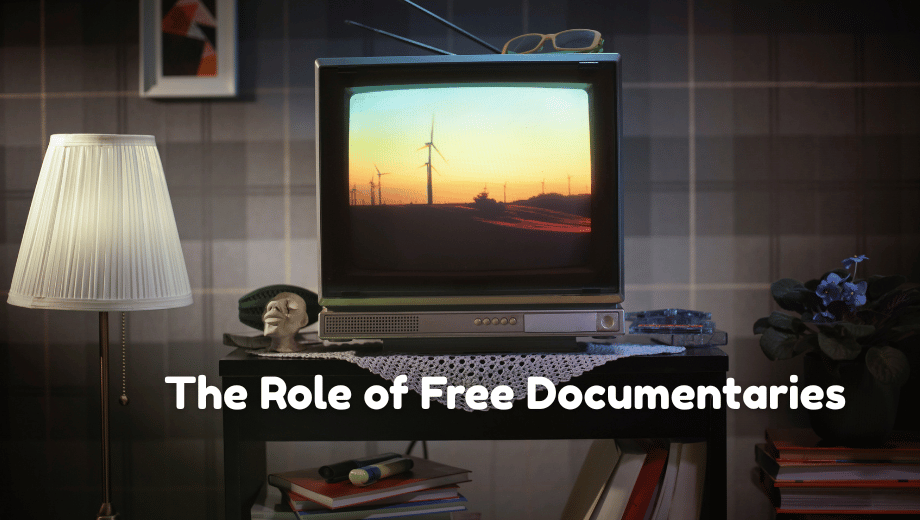In today’s digital age, free documentaries have emerged as powerful educational tools, reshaping how people access and engage with information. Unlike traditional learning methods that rely on textbooks and lectures, documentaries provide immersive, visual narratives that bring complex topics to life. From environmental issues to historical events, these resources offer a more dynamic and accessible way to explore new ideas, making learning more engaging and inclusive.
Platforms like Curiosity Stream and various free streaming services have helped redefine the boundaries of informal education. These documentaries appeal to a broad audience—from students to lifelong learners—by offering in-depth content on a range of subjects without the constraints of a classroom. As visual storytelling becomes a key part of processing information, free documentaries encourage viewers to become more curious, self-directed learners who actively seek knowledge beyond conventional formats.
Key Takeaways
- Free documentaries increase access to quality education and information for diverse audiences.
- Streaming platforms featuring documentaries play a pivotal role in democratizing knowledge.
- Short-form and long-form documentaries can spark curiosity and foster lifelong learning habits.
- Emerging tech and digital trends are transforming how documentaries reach viewers.
- Parents, educators, and lifelong learners can use free documentaries as engaging resources.
Why Free Access Matters
Removing financial barriers to educational content is crucial. Many individuals face obstacles due to cost, location, or inadequate infrastructure. Free online documentaries provide high-quality learning tools for students, professionals, and lifelong learners, enabling participation in knowledge-building and self-discovery. This shift towards open access promotes inclusivity and a diversity of voices in the educational landscape.
Data indicates a growing audience for educational streaming content and emphasizes the transformative impact of accessible documentaries. Unlike traditional textbooks, multimedia resources offer richer, more memorable learning experiences, particularly benefiting those with challenges accessing conventional education. This approach helps level the playing field and encourages a culture of curiosity.
How Streaming Services Support Education
Streaming services transform education by providing easy access to curated learning materials from anywhere. These platforms act as virtual classrooms and libraries, using recommendation algorithms to guide users to reliable titles that match their interests. For educators, incorporating documentaries into lessons enhances discussions and deepens understanding of real-world issues. Families benefit from tailored features like parental controls and age-appropriate recommendations. For homeschoolers, documentaries offer relevant context and bridge the gap between theory and application while supporting various learning styles and fostering essential skills in media literacy and critical thinking.
Fostering Curiosity with Visual Storytelling
Documentaries are powerful tools for nurturing curiosity and enhancing learning. They combine facts, expert insights, and engaging narratives, making complex subjects accessible and memorable. Unlike traditional texts, documentaries immerse viewers in vibrant experiences, illustrating scientific concepts, archaeological findings, and historical events. They foster emotional connections through personal stories and visuals, increasing empathy and retention. Many viewers discover new interests or global issues through documentaries, often inspiring them to take action, volunteer, or pursue related careers. Pairing compelling visuals with relatable content transforms facts into a lifelong learning catalyst.
Tech Trends Driving Documentary Popularity
Technological advances are driving the rising popularity of documentaries. With smartphones, tablets, and smart TVs, streaming documentaries are accessible anywhere, anytime. Interactive features like adaptive subtitles and personalized content suggestions enhance the viewing experience. The future holds even more innovations, such as real-time language translation and live Q&A sessions with directors or experts. These trends highlight how digital education evolves, increasing documentaries’ reach and educational value.
Getting the Most Out of Free Documentaries
- Preview reviews and audience ratings to select documentaries renowned for accuracy and depth.
- Fact-check extraordinary claims, drawing on academic articles or reputable news sources for validation.
- Participate in online discussion groups, forums, or social media communities to exchange perspectives and deepen understanding.
- Take notes while watching—jotting main ideas, surprising facts, and questions for further research enriches the learning process.
- Encourage young learners to discuss how documentary content relates to real life, classroom assignments, or current events.
Incorporating Documentaries Into Everyday Learning
Free documentaries make learning a part of the everyday routine easier than ever. Whether turning a daily commute into a mini-classroom or using family movie nights to spark conversations about science and history, there are limitless ways to bring the world’s knowledge home. Even those with little time to spare can stream a short documentary, igniting a passion that fuels deeper exploration.
As digital platforms continue to expand, the future of education becomes more inclusive, flexible, and dynamic. Free documentaries offer information and opportunities for engagement, connection, and lifelong growth for audiences everywhere. This new era of learning is one where knowledge can truly be pursued by all, wherever curiosity leads.




